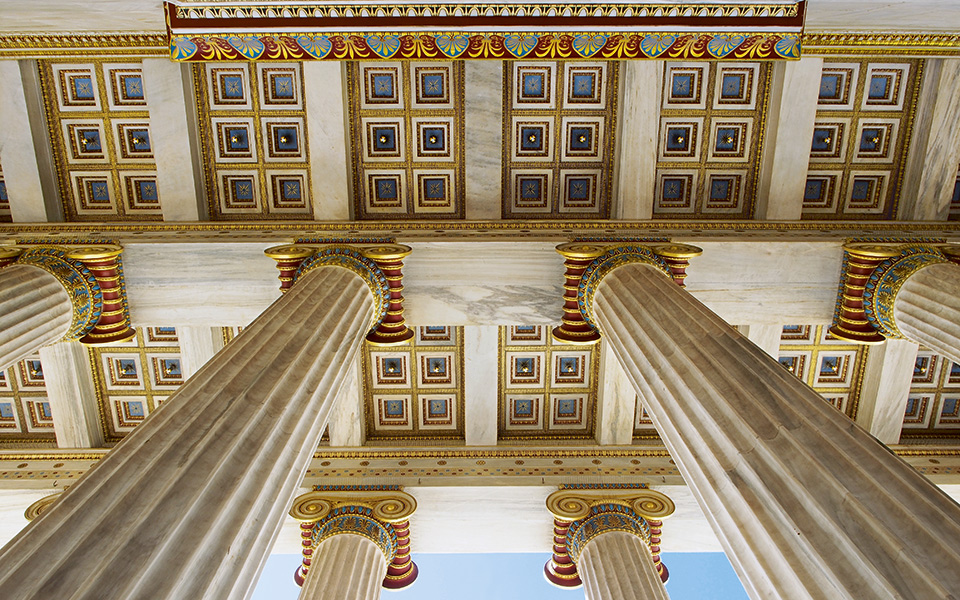World-famous, the stunning Athenian Trilogy – the three elegant buildings on Panepistimiou Street – stands above the scramble of one of the city center’s busiest thoroughfares. Designed in the mid-19th century by the Danish Hansen brothers and completed years later with the help of benefactors and donors, these buildings have seen it all: from the urban planning visions of King Otto and the star architects of the time, horse-drawn carriages making way to trams and later cars, to apartment buildings popping up on all sides and the evolution into a metropols of today, complete with demonstrators, official guests and distinguished academics, migrants, students, drug addicts and peddlers.
Athenians may hardly cast them a glance, but their presence is a constant, a consolation in an ever-shifting landscape.
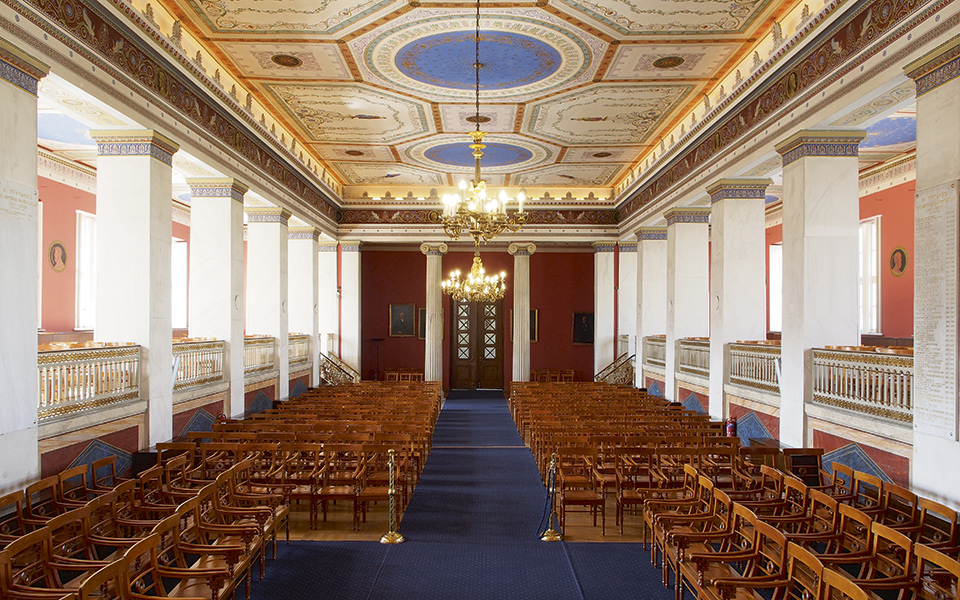
THE UNIVERSITY
A union of vision
Our tour of the neoclassical Athenian trilogy begins in the forecourt of Athens University, the first of the three buildings to be constructed, in 1864, by the Danish architect Christian Hansen and the one that gave its name to one of the busiest streets in the city center, Panepistimiou (University street). Before I go in to view the famous Great Hall of Ceremonies, the aula, I look up to marvel at the colorful murals in the portico, one of its most impressive elements. Financed by wealthy benefactors Simon Sinas and Nikolaus Dumba, the mural was designed by Austrian artist Carl Rahl and executed after his death by Polish painter Eduard Lebiedzki. At its center it depicts King Otto, the building’s primary donor, surrounded by the arts and sciences personified in classical attire. I take several steps back to appreciate the entire mural, all 45 meters of it, and the edifice’s relative simplicity, despite its neoclassical splendor, which shows Hansen’s attempt to adapt it to the Athenian landscape of the time. Athens, you see, was still a village in those days.
“King Otto was not only one of the University’s primary donors, but also the one who ordered the construction of the University in the first place.”
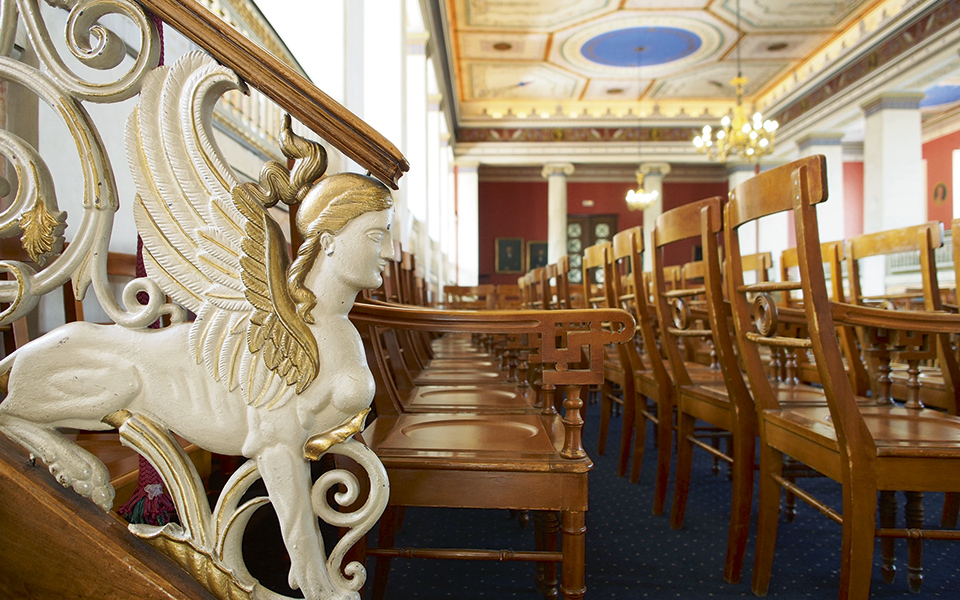
I join a group of Japanese tourists who approach the building to take photos. They peek in with curiosity, wondering what happened to all the students, only to discover that just some of the institution’s administrative services are housed here and that visitors are not normally allowed to enter for security reasons. Disappointed, they turn away, as I make my way in and up the marble staircase towards the aula. There is some commotion inside because they are getting ready to welcome French President François Hollande (our tour took place a few days before his official visit to Athens, at the end of October, during which he was presented with the title of Professor Emeritus of the University). This majestic hall is a regular venue for such ceremonial events. Its painted, multicolored ceiling, another impressive creation by Lebiedzki, adds to the architecture and makes for a space fit for a president.
“Only some of the University’s administrative services are housed here and visitors are not normally allowed to enter for security reasons.”
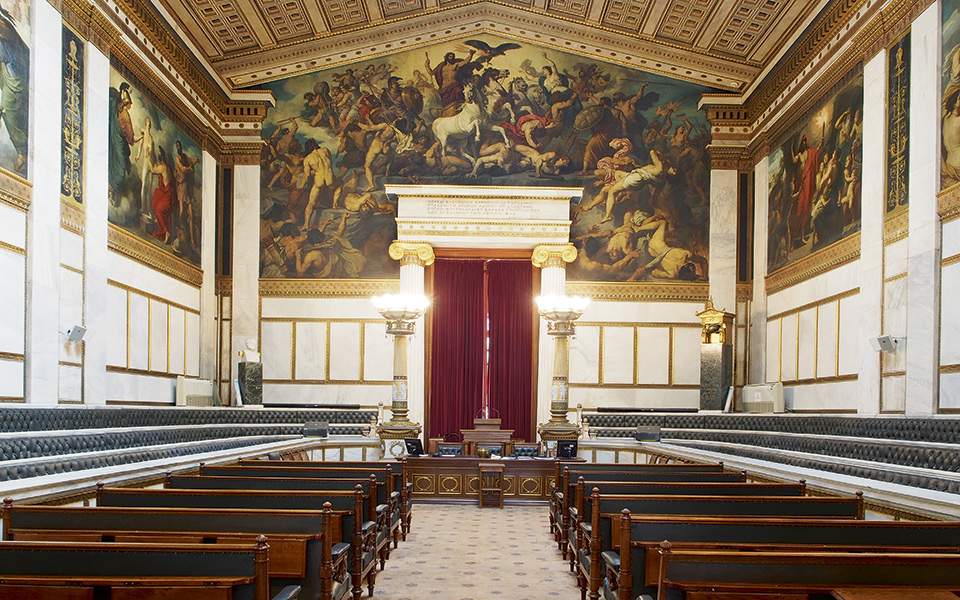
THE ACADEMY
Celebrating Excellence
As I stand on the threshold of the Academy of Athens, regarded by many Greek and foreign experts as one of the most beautiful neoclassical buildings in the world, I realize that none of these buildings would be standing here were it not for the generous donations of members of the Greek diaspora. Simon Sinas, the building’s benefactor, assigned Theophil Hansen – brother of the architect who designed the University – with its construction, which was completed in 1887.
Inspired by the Propylaea of the Acropolis, Hansen’s Academy was the result of the efforts and talents of many artists, including those of architect Ernst Ziller, a student of Hansen’s; sculptor Leonidas Drosis, responsible for the pediment above the entrance and the statues of Athena and Apollo on the flanking pillars; and Christian Griepenkerl, who painted the building’s hidden treasure, the pictorial ensemble in the meeting hall, which is where I’m headed.
“Thanks to the large donation of Simon Sinas, the Academy is the only building of the trilogy with sculptural decoration in the pediment.”
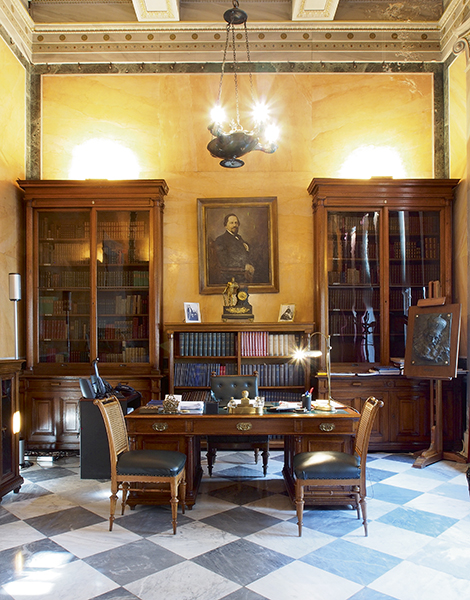
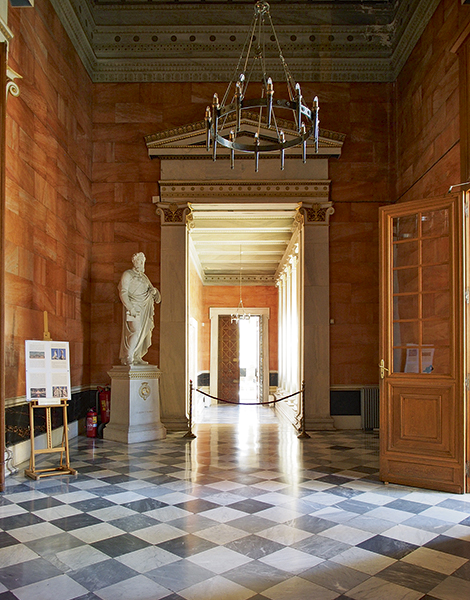
Through the main entrance, I encounter the marble statue of the Academy’s benefactor, Simon Sinas, standing guard. Straight ahead is the meeting hall, the most fascinating room in the building, which accommodates the plenary sessions of the Academy members and is home to some great works of art.
The 50m-long colorful mural, based on designs by Theophil Hansen and inspired by Aeschylus’ tragedy Prometheus Bound, depicts the Passions of Prometheus and reads like a story, starting from the prophecy about the theft of fire by Prometheus and ending with his reception by the gods on Mount Olympus.
Apart from its artistic qualities, what’s striking about Hansen’s mural is the choice of theme, centered on the authority-defying Prometheus who brings fire, a symbol of knowledge, to the people. No doubt this symbolism mirrored the beliefs of the Academy’s first visionaries who held that national independence from any sort of oppression had to go hand in hand with a spiritual renaissance through knowledge.
“Hansen’s mural is centered on the authority-defying Prometheus who brings fire, a symbol of knowledge, to the people.”
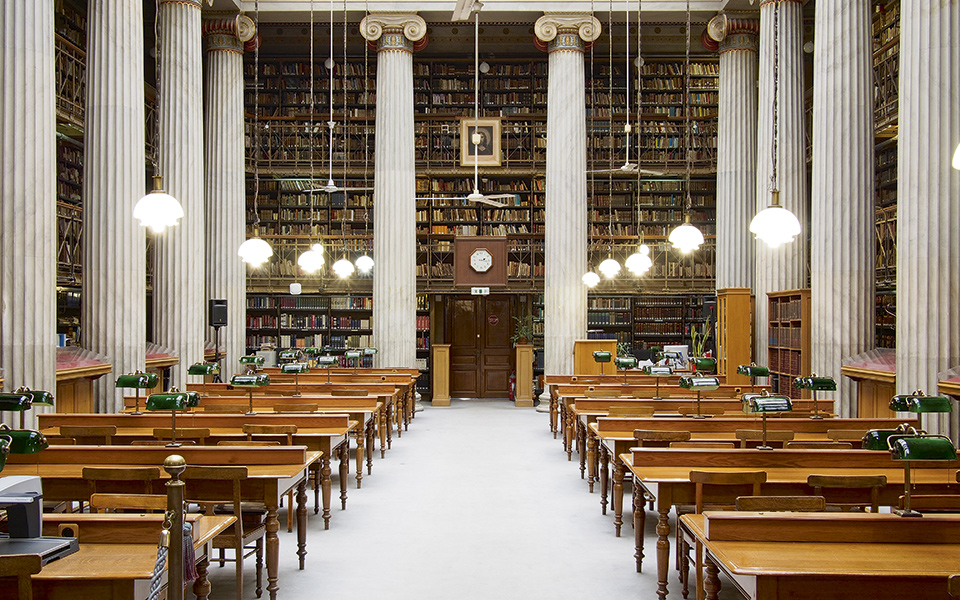
THE LIBRARY
Treasury of Knowledge
The National Library, created by Theophil Hansen in order to complement the Academy on the far side of the University, has been housed here since 1903 with a mission to preserve Hellenic intellectual heritage.
I walk up the monumental semicircular Renaissance-style staircase, which was chosen for practical rather than aesthetic reasons, as too many straight steps would have made the edifice taller than the adjacent ones. I pass under the impressive Doric prostyle portico, through the main entrance and arrive in the library’s lobby. The architectural order changes here with two pairs of decorated Ionic columns, contrasting the stern Doric exterior and making for a lighter space. Two exquisite library index card cabinets behind me have stood the test of time but are now ignored in favor of computers.
“The library, which like all National libraries has an archival and not a lending function, is home to some 2,000,000 volumes of books and periodicals and over 4,500 manuscripts.”
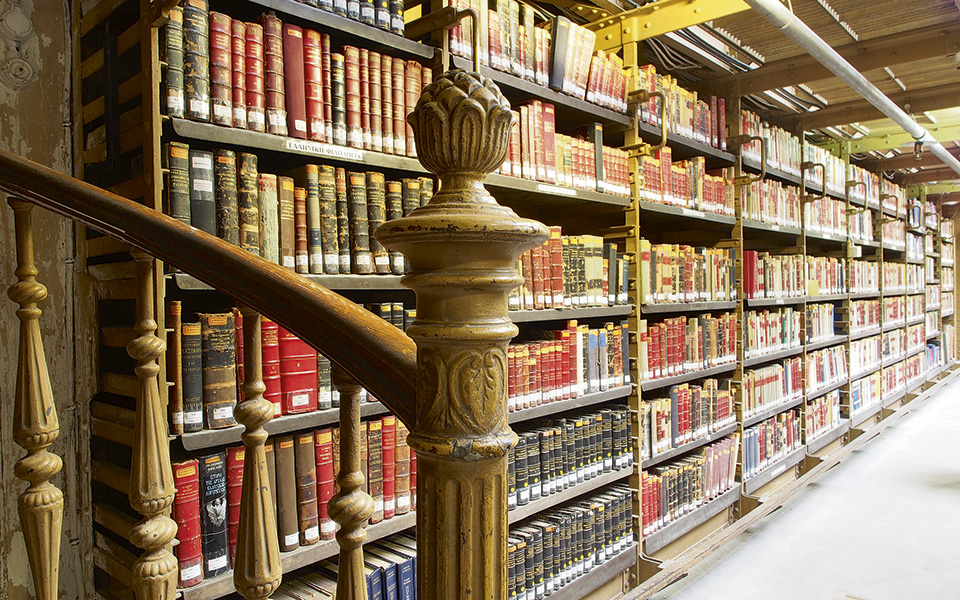
Beyond the lobby lies the reading room, where I am welcomed by the smell of old books, more of which are stored behind closed doors in the building’s side wings. The library is home to an impressive body of knowledge, including the first printed book in the Greek language from 1476.
The sun streaming through the skylight gives the reading room a somewhat imperial atmosphere and highlights its elegant marble Ionic peristyle and furnishings. The original tables and chairs, as well as the unusual cast-iron bookstands and galleries around me, are still in use and were designed by Ernst Ziller, a student of Hansen’s, who supervised the Library’s construction. I want to reach for my camera, but photography is not permitted and visitors can only peek in, unless they want to do some reading. So that’s what I decide to do. What better way to end my journey through the Trilogy than by doing some research on Hansen sitting on one of his student’s creations
Acknowledgements: This article would not have been possible without the invaluable assistance of Ioannis Skarentzos, Special Consultant at the Academy; Gregory Chrysostomidis, Reference Librarian at the National Library; and Dimitris Koutsombolis, Press Officer at the University.
INFO
Opening hours: Mon-Thu 09:00 – 20.00, Fri-Sat 09.00 – 14.00
• You can bring your laptop, notebooks or your book. You will have to leave your other personal belongings in one of the available lockers.
The library’s treasures will be relocated some time in 2017 after their new modern home will be completed within the Cultural Center of the Stavros Niarchos Foundation.

